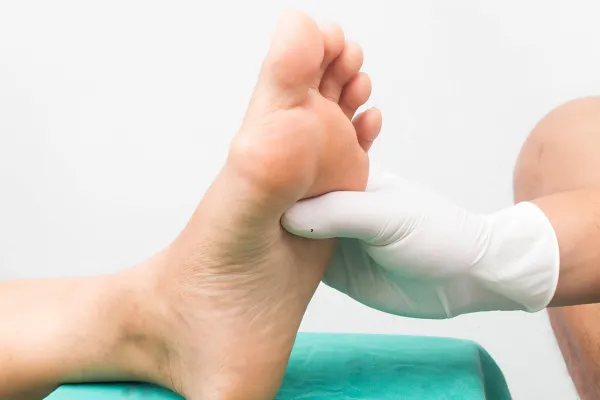
It Might Look Small—But It Can Turn Serious Fast
Have you ever noticed a tiny sore on your foot and thought, “It’s no big deal, it’ll heal on its own”? You’re not alone. Many people ignore small wounds, especially if they’re not painful. But here’s the thing: even a tiny sore can become a big problem, especially for people with diabetes, circulation issues, or nerve damage.
At American Surgeons Group, we see this all the time—what starts as a small red spot or blister can turn into an infected wound that doesn’t heal. The good news? With early care and the right treatment, most foot sores can heal well and fast.
Why Do Foot Sores Take So Long to Heal?
Your feet are under a lot of pressure every day. Literally. You walk on them, squeeze them into shoes, and maybe don’t check them as often as other parts of your body. That means:
Wounds are easy to miss
Blood flow may be reduced, especially if you have diabetes or vascular problems
Nerve damage (neuropathy) can prevent you from feeling pain, so you might not notice the injury right away
Moist environments, like sweaty socks, can make healing harder and encourage infection
When wounds don’t heal quickly, they can deepen or get infected—especially if there’s poor circulation or immune function.
What’s Considered a "Small Sore"?
A “small sore” might look like:
A blister from new shoes
A crack in the heel
A small cut or scrape
A callus with redness underneath
A tiny ulcer or open area on the toe or sole
It might not hurt at all. In fact, pain isn’t always a reliable signal—especially in people with neuropathy (loss of feeling in the feet).
When to Be Concerned About a Foot Sore
Even if it seems minor, pay attention to these warning signs:
✅ It’s not healing after 3–5 days
✅ The area is red, warm, or swollen
✅ You see pus or drainage
✅ The sore is getting larger or deeper
✅ You have diabetes or a history of foot wounds
✅ You notice a foul smell
✅ You start to feel pain in a spot that was previously numb
If any of these happen—don’t wait. Wound care is most effective when started early.
How a Podiatrist Can Help
We specialize in foot and lower leg wounds—especially wounds that aren’t healing well.
Here’s what we might do at your visit:
Check your circulation and nerve function
Clean the wound properly and apply advanced dressings
Take cultures if infection is suspected
Offload pressure with custom padding or a special boot
Start a wound care plan to track healing and prevent complications
Provide education on daily foot checks and home care
Prevention Tips You Can Start Today
You don’t have to wait for a problem to take action. Here's how to protect your feet:
Inspect your feet daily—top, bottom, and between the toes
Keep feet clean and dry
Trim nails carefully or have them trimmed professionally
Wear shoes that fit properly (no rubbing or squeezing)
Moisturize dry skin, but avoid lotion between the toes
Manage blood sugar levels if you’re diabetic
Final Thoughts
That small sore on your foot? It might seem like nothing—but it’s always better to be safe than sorry.
If you have diabetes, poor circulation, or just a sore that won’t heal, let’s take a look. Catching issues early can prevent serious complications like infection or even amputation.
We’re here to help your feet stay healthy, strong, and pain-free.
👉 Ready to get it checked out? Contact us today to schedule your visit.
